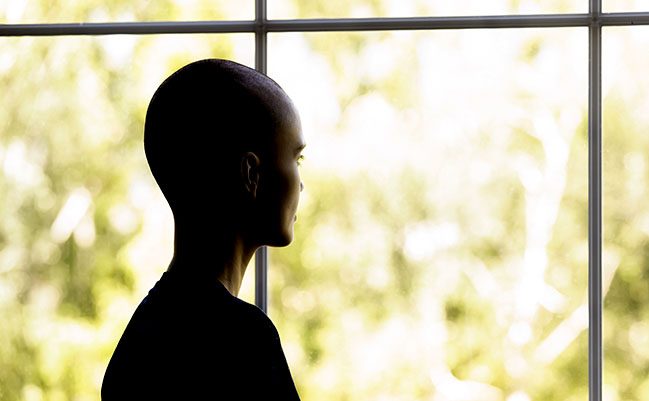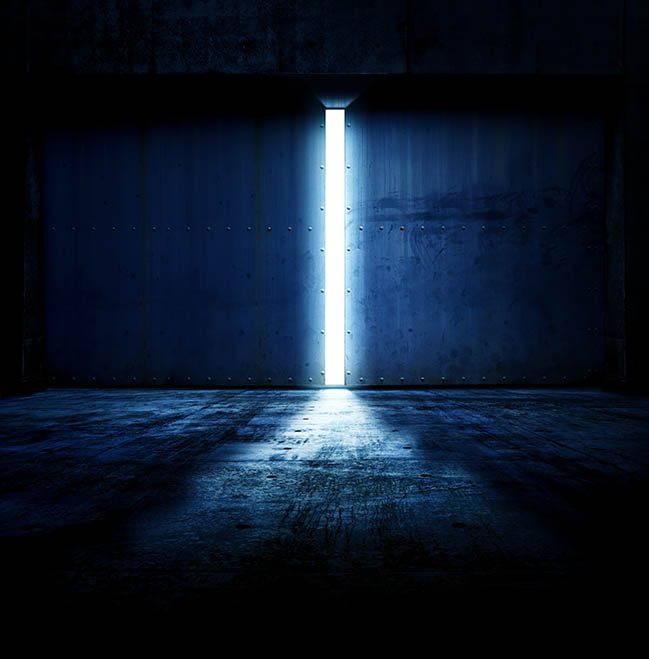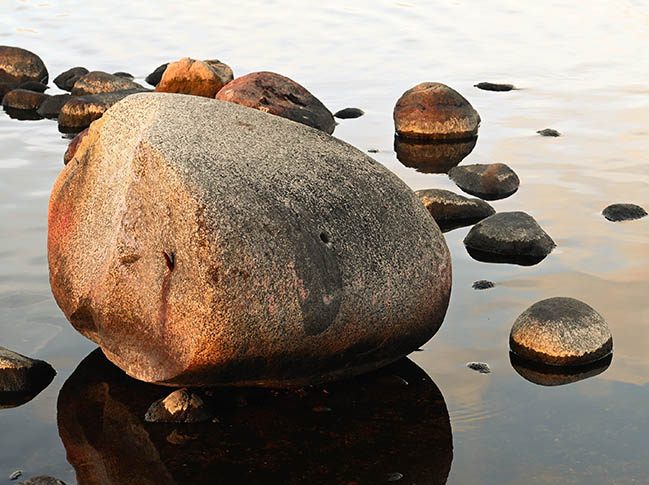Season’s greetings to you! Welcome back to the blog and thank you for dropping in after so long. I have news of both kinds. I’d like to give as much clarity as I have on matters of health, and I’ll open the doors so you can see what’s happening on the factory floor.
In the previous post, I expressed the optimistic outlook of my neurologist that I could be back to normal within a year. It turns out that this wasn’t based on any actual science other than optimism. The prescribed meds gave a little temporary relief from insomnia and either triggered or coincided with a slight remission, but what followed was worse than anything I’d experienced up until then. ME/CFS/SEID can affect people so mildly that it’s little more than a feeling of being slightly wrung out, or so severely that they are completely disabled, unable to care for themselves. After posting the last blog article, I began to slide and spent 8 months bedbound before the storm passed.
Most people with this illness experience the light to moderate end of the scale (as I did for the first few years), so there’s sometimes a bit of confusion or incredulity when they hear how bad it can get. But I suppose that’s the case with many chronic illnesses. Even things like eczema or headaches can become so bad that a normal life is no longer possible. In my need to research, I’ve found that the number of those struggling with chronic illness is far higher than I had thought. Perhaps the ignorance was due to the fact that one doesn’t often meet the chronically ill at social functions. They’re at home or at a medical facility, watching people and seasons pass by on the other side of the glass. I used to find it difficult to relate. Now I think of these – young and old – as my people, as much as is possible without being able to see faces or learn names. If you’re a part of this group, know that you are often in my thoughts.

Over the latter part of this year, my condition has improved, but I’m still pretty sick. Currently, the pain and weakness keep me mostly housebound and sometimes bedbound. I have one or two slightly better days in a month when I can leave the apartment for a brief escape to see friends or just get some air. I seldom have the strength to sit at a desk, but I found that if I use a laptop stand and a remote keyboard, I can set up the sleeper couch like a zero-gravity workstation. I highly recommend it to anyone in similar circumstances. Conserving every drop of energy is the name of the game. It’s like sealing all the leaks in a network of pipes, sending water only where it’s absolutely needed, and watching the output trickle slowly increase.
The improvement in health has been just enough to restore clarity of mind – when not in pressured environments. With clarity has come the capacity to write again, within limits. Other than what I managed to put together for the previous blog post, it’s the first time I’ve been able to produce content in a little over 2 ½ years. For me, that’s reason for a few firecrackers. My current mental condition is like a layer of thin ice on a lake – clear, but also fragile. Too much weight and it crashes in. I keep a sharp ear open for the tell-tale clinks that warn against taking on too much.

Light writing, then, is within reach, as long as I avoid overload. The mental lockup that follows overdoing it isn’t like what is often described as brain fog. Instead, it’s as if glue has been poured into an engine. Thoughts become so slow and jammed up that even basic things like texting can be impossible, sometimes for months. Avoiding these crashes means staying under the exertion limit. ME is not a beast you can fight. It’s more like quicksand, and things get rapidly worse if you struggle against it.
It took a few rounds of careful experiments to determine my new exertion threshold. It wasn’t as high as I was hoping. As I tried to get to work again on Book 2 of The Wakening, I was faced with the reality of scale.
The manuscript is around four times the length of a standard novel (not uncommon in epic fantasy), has multiple threads, a huge cast, and weighty themes that were difficult to work with even when I was healthy. Images of large aircraft under construction have often come to mind when I think of the book. Prior to illness, this was the kind of project I thrived on. Now, just trying to familiarise myself with the overall scheme pushes me over my limit and I can feel that dreaded mental lock-up taking hold.

Since I became ill six years ago, I have been able to work on individual sections when health permitted, but the final stage requires me to load the whole story into my mind and bring it all together. This is significantly more demanding, and it’s not something that can be broken into chunks. Unfortunately, whenever I try to get into it, I breach my exertion threshold before I can make any meaningful progress.
I think if I were a reader, I’d be pretty frustrated. I am sorry for that. If it were possible to hand it over to someone else to finish, I would consider it, but there are numerous reasons why that wouldn’t work here. If recovery eludes me, some form of collaboration might be needed, but that’s not a quick or simple process, and I don’t think it will come to that. I’ll explain further on. While I have some ideas on how I could progress with the fantasy series, the more urgent problem I need to deal with is the matter of keeping food on the table. Most of my employable skills demand a level of physical activity or interpersonal engagement that is so far beyond my capacity I wouldn’t make it through ten minutes. Music is almost within reach, but not quite. Writing, it turns out, is the only realistic option.

As I was looking at bookshelves, I began to notice an irony. As a chronically sick author, I’ve been struggling with this huge tome of a manuscript, while healthy authors, usually in other genres, sprint past, bearing new novels to market that are a fraction of the size. I found myself wishing I had a novel like theirs, one that might fall within my current capacity. I considered my thesis novel, but I hit roadblocks there. What I needed was something of standard length, light in style, and free of insurmountable obstacles. And then I realised, I actually had such a manuscript.
It’s time to push open the big steel doors to a section of the story factory that’s hardly ever been used or seen.

Several years ago, soon after releasing Dawn of Wonder, I found myself needing a break from fantasy, so I took about six weeks to write something that was welling up in my thoughts. It would fall into the science fiction category, but only in the sense that it’s an adventure set in the future, not because it’s full of aliens, space battles, and technical explanations of celestial mechanics (all of which I rather enjoy as a reader, but don’t really want to write about). In this regard, it’s quite similar to Dawn of Wonder which contains little in the way of standard fantasy elements – no magic system, elves or spells, among others. It means that the jump in reading experience from Dawn of Wonder to the new novel will be a lot less than the change in genre suggests.
What usually draws me along when I’m writing is a longing to explore a strange and often daunting world, sharing adventures with characters that intrigue me and whose company I enjoy. That’s what’s at the heart of this story. Within science fiction, the books that draw me in are the ones where interesting tech is found in a setting of natural wonders, rather than in a setting where nature has been replaced by all things artificial. Though the new book is set in the future, it’s not set in plastic.
So, why science fiction? You may know that my first completed line of study was physics (which actually came after two years of engineering). What you wouldn’t know is that I’ve had a deep love of science and the stories built around it since childhood. I was about five when I started dismantling broken appliances to fix, or better yet, to strip them for parts and build my own gadgets. And my first foray into writing, also around that time, was about a futuristic aircraft. The technology was fascinating, but even more so when it extended the boundaries of imagination.

I think I was first bitten by the science bug in early childhood when I managed to work my fingers into a plug socket. It was an introduction that filled me with both electrons and awe, and while the excess electrons marched out through the grounded finger, the awe remained. A few years later, my childhood sandpit became one of the places where my love of worldbuilding took root, and most of the time it wasn’t warriors on horseback that lurked in hidden caves – it was spaceships. My heroes flew around with jetpacks to dock on Lego aircraft, all custom designs with numerous and perhaps improbable capabilities.
It wasn’t a matter of preference that my first book was fantasy, but rather a matter of timing. If I were to guess, I’d say the fantasy route was the result of leaving my country home for the big city, which brought about a deep yearning for the traditional ways of country life. Lately, in idle moments, my imagination has been tugging me on much longer journeys. I suspect being cooped up for years in my apartment has recalled a longing to explore more distant places.

So back to the recently opened floor of the story factory. It’s typical for any author’s workshop to contain scraps of ideas and partial manuscripts ranging from the promising to the embarrassing, but a complete first draft is rare gold. It is so much easier to finish a story that already has its basic form than to start with blank pages and a sort of vague idea that you want to fill them with something terrific. Rewriting a first draft is like following behind an icebreaker.
As I considered the science fiction manuscript from a range of angles, I saw that it was most likely within my current capacity. It’s about standard novel length, has a smaller cast, is an easy-reading adventure, and is set in a story space my mind has been drawn to of late. I actually don’t think I could imagine a more perfectly suited project for the current need.
Everything then came to a point of decision. I was faced by a massive and complex boulder of a manuscript I haven’t been able to budge while sick, and a much lighter one that I can. It wasn’t a choice between two projects; it was a choice whether to do the only project within my current capacity.

In spite of how clear it seems, discussions around these kinds of changes don’t always go as expected.
“I don’t have the range to get to B, so I’ll need to go to A.”
“Yes, but if you don’t get to B, you could lose everything.”
“The problem isn’t motivation, it’s illness. I really REALLY want to get to B, but I can’t reach it. A is the only destination on my list I can reach.”
“But there’s more invested in B. It’s what people are expecting. You should rather go there.”
“I think you missed the parts where I said I can’t reach it.”
“There’s no such thing as can’t – only won’t.”
“Alright, my illness won’t let me reach it.”
“Listen, last year I hurt my shoulder and the specialist said I wouldn’t be able to play tennis again for nine months. I was back on the court after six. All it took was willpower. Sheer willpower. Trust me, you can do anything you set your mind to.”
“That’s … really not the same thing.”
“It’s the same principle. Exactly the same. Stop making excuses. Instead, just make it happen!”
Living with chronic illness is about adaptation. That “no such thing as can’t” approach works against walls of plaster, but not all walls are made of plaster. Charging forward and ramming your head into a wall of rock makes no difference to the rock and quite a lot of difference to the head. I speak from experience – and a headache.
Following a week of internal debates and deliberations, I decided to give the lighter manuscript a go and see how I held up. Progress was better than expected and the strain less than expected. After almost two months of work, it is looking both feasible and promising.

Perhaps the question that most naturally follows all of this is, “When will work resume on The Wakening?” My expectation is that once this shorter book is out and covering my living costs, I’ll be able to return to the fantasy series. It’s not just optimism, it’s observation. I’ve found that working on a lighter project is having an effect on me not unlike rehabilitation exercises. Being able to keep going for more than two weeks without a meltdown is giving me an opportunity to tweak the engine and process. I’ve already made dozens of adjustments, from work position to diet. It’s been a two-percent improvement here, one percent there, three percent there … but it’s all been adding up. In addition to buying the time I’ll need to wrap up Book 2 of The Wakening, this project appears to be preparing me as well, gradually increasing my capacity.
The next logical question would likely be, “How long will the new novel take to complete?” It all depends on writing pace, which I’m still trying to determine as I improve it. On an average day, I manage a little over half my normal quota, but it’s not a consistent thing because my symptoms change from week to week. Though it will take me longer than when healthy, it definitely won’t be years in the making.
A friend suggested that I provide some early-look chapters of the new book. There aren’t any that are ready to be nudged out onto the stage yet, but what I can do is give you a more literal glimpse into the world I’m building. To spark creativity, I recently spent a day putting together one of the settings in the story. This is how it turned out. It’s a scene from about a third of the way in.

As you can see, it’s not a world of geometric hills and globular purple succulents dribbling toxic goo under a crimson sky. Regardless of genre, the kinds of worlds I like to build and explore combine the familiar and beautiful with the strange. If it’s all strange and weird, I struggle to feel a connection. Some of the “strange” in this scene is lurking down in that mist. As an aside to the science folk, if the size of that moon has you wondering about the Roche limit, think of it as a trick of photography – the one where you use a telephoto lens from a long way back to make objects in the extreme distance appear larger.
When health is shaky, it’s daunting to post about a project that’s still in the early stages. Far safer to do it all behind closed doors and only announce it when it’s finished. But I thought you would appreciate the transparency, and I would like to have you aboard from the start to share the journey. There is still some distance to cover, but even with the limited range of my ship, this standard-length novel is a destination I’m sure I can reach. It also seems that my capacity and productivity are slowly increasing. I strongly suspect that by the time I reach A, I’ll have the range to get to B.
Thank you so much to everyone who reached out through the comments. As usual, I kept the personal ones back as private mail, along with the medical advice, but please don’t think that means it’s less appreciated. Your support has been deeply meaningful through this time.
I’ll post again when I’m further along. Until then, here’s wishing you a wonderful Christmas with loved ones and a new year of real hope.
P.S.
There have been several suggestions that I use Patreon to help with the financial squeeze. At first, I was going to reply and say that the benefits schedule would be a problem. That avalanche of deadlines would be the worst thing for my illness. When the no-benefits tip-jar option was suggested, my knee-jerk reaction was to politely decline and explain how I felt uncomfortable taking anything for nothing, but it just felt wrong, kind of haughty. So while this isn’t the most comfortable experience, I won’t deny that support across this stretch to the next release would be a great help. If you’re interested, here’s the link.


While pregnant with my third baby, I got a tiny little glimpse of what chronic illness is like. Yipes!! I do not recommend it. It’s hard on everyone in the family. I’m so sorry you’re having to endure this, but I hope you’re on an upward trajectory. Your latest project sounds exciting! I know my husband and I would love to read anything you produce. Blessings to you and your family. we will pray for you! ❤️❤️
Thanks for the update.
Really glad that there is progress on your health. Your mind is amazing, you have to look after it and don’t push it as stress is an evil component to add to the whole mix.
What you created in book 1 is a true masterpiece, easily one of the best books I have ever read, on a par to the 1970s when I discovered Tolkien. I read book 1 at least once year and every time I read it, the mental pictures are vivid and amazing. My best wishes for a recovery.
Stay well
Every few months I check back to see how your health is doing. I come from a family with frequent medical issues and I understand the problems that present themselves. I’m happy to receive any information, and this post was really good. I am amazed at your dedication to both your fans and your own health. Keep fighting.